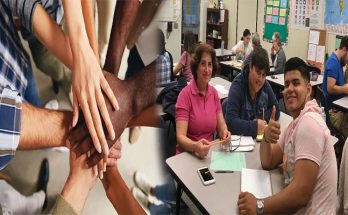Many student trips to Virginia concentrate on early American history and also the study from the Civil War. With internet sites like Colonial Williamsburg, Jamestown Island, Yorktown Battlefields, Arlington National Cemetery, Monticello, and the historic homes of many presidents, it is no surprise quite a few college trips to the Commonwealth concentrate on history. But a school trip to Virginia is also an awesome option for the study of science.
In preceding articles, I’ve written about science destinations in Northern Virginia and Washington D.C. and an Eco Tour of Virginia. This short article will concentrate especially on destinations in Southeastern Virginia in Norfolk, Hampton, and Virginia Beach. Destinations around the science tour of Virginia are usually combined having a student trip to Washington D.C. or Williamsburg or taken as a stand-alone educational tour of Virginia.
Nauticus, The National Maritime Center
Nauticus is situated on the harbor in Norfolk, Virginia. The Museum can be a 45-minute bus ride from Williamsburg and is well worth the trip. Nauticus is property to battleship Wisconsin, the last battleship built by the U.S. Navy. Students understand the way science impacts Naval history and economics and solutions and instruments applied in navigating the sea. College groups tour the battleship Wisconsin as well as the nearby museum. Afterward, groups can have lunch at Waterside, and explore downtown Norfolk.
Mariners’ Museum
The Mariner’s Museum is situated in Newport News, Virginia, and encompasses 60,000 square feet of exhibition space. Students can discover the maritime history and view artifacts in the Monitor battleship and exhibitions on topics for instance the Chesapeake Bay watermen. Groups touring the museum will see handmade ship models, paintings, and photographs connected to the history of work on the sea from world-class collections. When the climate is good, college groups can take a walkabout Mariners’ Museum Park and Noland Trail, a naturally wooded setting surrounding Lake Maury.
Virginia Air and Space Center
The Virginia Air and Space Center is not far from NASA Langley Air Force Base in Hampton, Virginia, exactly where America’s space exploration plan initially started in earnest. The museum exhibits document more than one hundred years in aviation and presents visitors with an overview of space exploration that contains artifacts from space flights. The Virginia Air and Space center homes over 30 planes. With its higher-tech interactive exhibits and an Imax theater on the website, it can be sure to become a common destination for student groups.
Hampton Roads Harbor Cruise
1 way for students to view and find out about life inside the Chesapeake Bay region is to climb aboard a boat that provides students a view of the harbor. Harbor cruises leave from either the port of Norfolk or Hampton, Virginia. Every cruise involves unique views and points of interest. Students will see the awe-inspiring Norfolk Naval base, exactly where aircraft carriers, submarines along with other support vessels are docked. Groups will find out about other points of interest inside the harbor that date to the time of the initial English settlers along with the Civil War. The harbor cruise requires around two hours and delivers a perspective that’s stimulating and distinctive from a walking tour.
Lifesaving Museum of Virginia
Student groups can take a trip to Virginia Beach, Virginia to explore the Lifesaving Museum of Virginia. Here they will see the remains of shipwrecks, and discover about lifesaving and strategies and gear utilized to rescue individuals in the sea. Groups may elect to take a guided College with the Surfman tour that consists of an overview of skills honed by rescuers and their stories.
The Southeastern corner of Virginia, also known as Tidewater Virginia, will be the perfect place for students to engage in active learning about scientific topics. It is wealthy in maritime history and also the innovations of space exploration. The Tidewater location of Virginia is also property towards the biggest Naval base around the East Coast and quite a few U.S. Coast Guard stations. Based upon curricular objectives, student tour leaders may perhaps also elect to add other destinations to the science tour for example a check out to Chincoteague National Wildlife Refuge, the Virginia Marine Science Museum, the Virginia Living Museum, or the Virginia Aquarium and Marine Science Center.





